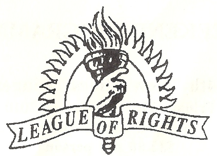The Met Office Is Cooking the Climate Books — And We Just Found the Smoking Gun! By Richard Miller (Londonistan)
Imagine checking the weather and discovering it's been made up for years. That's exactly what's happening in Lowestoft, where the UK Met Office has been reporting temperatures from a station that closed back in 2010. Yet on official records, the station is still "open," and its data continues to feed national climate statistics!
Citizen sleuth Ray Sanders has done what the Met Office refuses to do: show the sources. The agency claims it estimates missing temperatures using "well-correlated neighbouring sites." The problem? There aren't any. The closest real stations are miles away, poorly sited, and some didn't even exist when Lowestoft was operational. Any correlation here is not just weak, it's impossible.
Despite repeated Freedom of Information requests, the Met Office won't disclose the stations behind its numbers. They dismiss inquiries as "vexatious," leaving the public to wonder: how much of the UK's climate data is real, and how much is invented to fit a political narrative?
This isn't a trivial mistake. The Met Office is government-funded, and its data drives policy, Net Zero targets, and energy decisions. If the underlying numbers are fabricated, then the policies built on them are on shaky ground. Averages of averages, extrapolations from distant stations, and potentially invented figures, give the illusion of precision where none exists.
Science only works when it can be checked, challenged, and verified. By refusing transparency and relying on guesswork or fiction, the Met Office risks losing public trust entirely. Lowestoft may be just one station, but it exposes a bigger question: how much of the national climate record has been cooked to fit the story authorities want to tell?
Until the Met Office comes clean, every temperature chart and climate statistic it produces should be taken with a grain of salt. Because if you can't trust the thermometer, you can't trust the story. It would be interesting to know just how much of this practice goes on in received climate science.


Comments